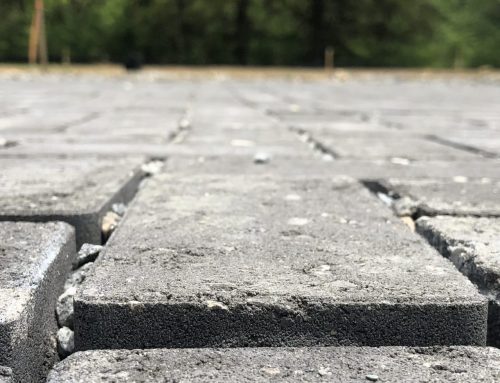Public-Private Partnerships (PPPs) have become a popular method in recent years for Maryland county governments to meet their stringent Watershed Implementation Plan (WIP) goals brought about by the Chesapeake Bay Total Maximum Daily Load (TMDL). In order to meet the WIP goals, MS4 permits for Maryland’s 10 Phase 1 counties require that each effectively restore 20% of their untreated impervious area (Maryland Department of the Environment, 2014). Prince George’s County’s Clean Water Partnership was the first PPP program, with a stated initial goal of retrofitting over 2,000 impervious acres on public and private land over a three-year period (Clean Water Partnership, 2016). Other counties, including Anne Arundel County, Howard County, and Montgomery County have followed suit, with smaller PPP efforts of their own. While each program/contract is different, they all generally follow the same approach:
- Community issues a request for proposals (RFP) with a set fee for stormwater retrofit or restoration best management practices on private property.
- Consultant/contractor teams submit proposals that identify a number of sites where retrofits will be implemented and provide concept designs for those sites. Most importantly, the proposals must identify the exact impervious acreage that will be retrofitted for the fee.
- Community selects the bid that will provide the most impervious area treatment for the set fee.
- Contractor completes design and construction of the proposed projects.
- Community pays the set fee.
There are several benefits of this approach over traditional government procurement, including:
- Transfer of risk. The consultant/contractor teams are responsible for finding the suitable retrofit and restoration locations. If the sites turn out to be infeasible for whatever reason, the local government will not have spent any money on the failed designs. All risk is undertaken by the consultant/contractor team instead.
- Access to private property. Through this PPP approach, it appears that local governments are able to fund retrofit and restoration projects on private property, whereas direct government-led construction projects on private property can bring about significant legal and political challenges.
- Potential for more efficient implementation. With a single request for proposals and contract covering site identification, design, and construction, the bureaucratic hurdles involved with constructing multiple retrofit and restoration projects are significantly lowered.
While these benefits have made this approach very attractive to many communities in Maryland, there are significant challenges as well that perhaps deserve more attention and discussion:
- Loss of control and communication. Some of the PPP efforts make communication with the private property owners solely the responsibility of the selected contractor. This may not be a major concern as long as the projects go smoothly, and the contractor is experienced in working with private property owners. If not, problematic construction projects (due to mistakes or just the typical challenges of construction) combined with breakdowns in communication can lead to dissatisfied citizens and major headaches for all involved, including local government staff.
- Loss of innovation and creativity? When the consultant/contractor teams essentially have to guarantee that their concept designs will be constructable at a fixed price, there is very little room for innovation or creativity at the concept design stage. Proposed projects have to fall within defined best management categories and be clearly permittable. There is little to no room for “Why don’t we try something new and see if it will work?” type thinking with this approach. While this type of thinking can sometimes lead to expensive dead-ends, it can also lead to less expensive solutions.
- Restoration bean counting. With a PPP approach, the contractor has one goal: provide the promised area of impervious cover treatment. This focus has the potential to lead to less than ideal outcomes. If one knows the impervious cover crediting system well, it is possible to “game the system” by choosing projects that provide the most impervious cover treatment on paper, but in reality fall short of a community’s actual restoration goals. For example, it is relatively easy to convert a dry pond to a micropool extended detention pond with some minor excavation and outlet structure adjustments. While this improves BMP performance on paper, it’s not as clear how much actual pollutant reduction is provided. A focus on local restoration goals might look at converting that same dry pond to a wet pond or sand filter that could provide better pollutant removal and better protection of local waterways.
I realize that I may be biased – ok, I am biased: I am an engineer who specializes in stormwater concept designs, so I am generally not a fan of giving away all of my work for free on PPP proposals – but I think it is important to ask the question: Are we giving up too much to gain the benefits of PPPs? Now that PPPs are becoming common in Maryland, it may be time to evaluate whether they are producing innovative, well-designed projects that prioritize the best sites and meet the community’s restoration goals.
References
Maryland Department of the Environment (MDE). 2014.Accounting for Stormwater Wasteload Allocations and Impervious Acres Treated. Baltimore, MD. http://www.mde.state.md.us/programs/ Water/StormwaterManagementProgram/Documents/NPDES%20MS4%20Guidance%20August%2018%202014.pdf
Clean Water Partnership. 2016. Largo, MD. Prince George’s County’s Approach to Meeting Regulatory Stormwater Management Requirements. https://thecleanwaterpartnership.com/wp-content/uploads/2016/06/PGC-CBP3-Clean-Water-Partnership.pdf
 Greg Hoffmann, P.E.
Greg Hoffmann, P.E.
Program Director, Center for Watershed Protection
Greg has been with the Center for Watershed Protection since 2008. Through his work at the Center, Greg has had the opportunity to design numerous stormwater retrofits and develop stormwater regulations and guidance manuals for several states and communities. Greg has a master of engineering and a bachelor of science in environmental engineering from Michigan Technological University. He would be happy to discuss all things stormwater with you, but as a native Wisconsinite, would be just as happy discussing his beloved Packers.






